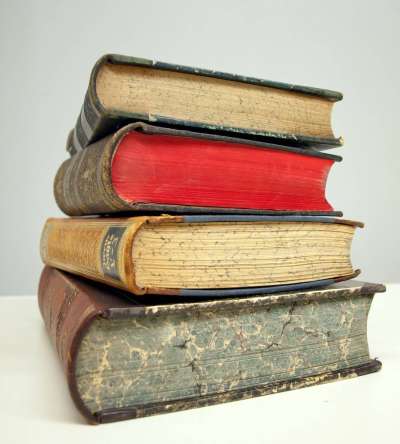Hands-on Activities
Mapping the Lighthouse Coast Bulletin Board: Maine, like many Atlantic, Pacific, Gulf, and Great Lakes states, is rich in lighthouses. Have students each choose a lighthouse from your nearest coastal region. Now, order a map from that state (state maps of Maine can be obtained from Maine Office of Tourism, #59 State House Station, Augusta, ME 04333-0059, phone 1-888-624-6345) and post it on the bulletin board. Individually or in small groups, have students determine the exact location of their selected lighthouses. Place a push pin at that location, then attach a string that leads to a student drawing and fact card about each lighthouse based on research. A fabulous resource for this research project is the eight volume Chelsea House series by Bruce Roberts, Lighthouses: The Life and History of America's Waterways. Purchase the volume for your geographic region from the following titles:
New England Lighthouses (0-7910-5488-8)
MidAtlantic Lighthouses (0-7910-5489-6)
Southeastern Lighthouses (0-7910-5483-7)
Gulf Coast Lighthouses (0-7910-5484-5)
Eastern Great Lakes Lighthouses (0-7910-5487-X)
Western Great Lakes Lighthouses (0-7910-5486-1)
California Lighthouses (0-7910-5485-3)
Pacific Northwest Lighthouses (0-7910-5490-X)
Invite A Speaker (Live or Virtual): If you live in an area of the country where there are lighthouses (Atlantic coast, Gulf coast, Great Lakes, or Pacific coast) contact one of the Lighthouse Associations below and invite a speaker to come to talk about lighthouse history and lighthouse preservation:
- American Lighthouse Foundation
- Chesapeake Chapter of the United States Lighthouse Society
- Delaware River and Bay Lighthouse Foundation
- The Florida Lighthouse Association
- The Great Lakes Lighthouse Keepers Association
- The Lighthouse Preservation Society
- Long Island Chapter, U.S. Lighthouse Society
- New England Lighthouse Lovers
- The New Jersey Lighthouse Society
- Oregon Chapter of the United States Lighthouse Society
- Outer Banks Lighthouse Society
- The United States Lighthouse Society
Save the Lights!: Lighthouses are in danger on all of our American coasts. Luckily, preservationists are actively involved in saving them before it is too late. Have students research and discuss lighthouse preservation before staging a debate about whether time and money should be spent to save lighthouses. Consult The Lighthouse Preservation Society's web site at www.maine.com/lights/lps.htm. (Perhaps your class might even consider a fundraiser in order to join.) You may want to view The Lighthouse Keepers (Leben Productions, 1996. 56 min. 616-857-4780) to learn more about lighthouse preservation (and history) along Michigan's vast shoreline. Finally, ask students to write a persuasive paragraph or essay in which they develop three supporting reasons for lighthouse preservation.
Lighthouse Keeper's Log: Light keepers were required to keep a daily journal in which they recorded the operations of their lighthouses in a very spare manner. Often, keepers were instructed to write the events of each day in a single line across two pages. If the Inspector came, if the supply boat arrived, if any unusual event occurred, that would be noted. Otherwise, the state of the weather, including the direction of the winds, was the essential information. (For more information and sample log entries, see "The Keeper's Log" at the Apostle Islands National Lakeshore site at www.nps.gov/apis/log/sandloga.htm). Ask students to write the entries for the Hendricks Head keeper's log for several days preceding the night of the big storm. Then include the log for the big storm and the following day when the sea chest washed ashore.
Maita's Diary: In the early pages of Maita's story, we learn a little about her life, which includes storytelling, egg-gathering, homeschool, and visits from the supply boat. Ask students to create a diary that Maita might have written during her lonely years before the sea chest arrived. Then have students imagine that Maita was, instead, living on Sanctuary Island today. Perhaps her parents run the museum on the island (explain that the light itself would have long been automated). How might her life be different? In what ways might it be less isolated? Ask students to create diary entries for a modern day Maita at Sanctuary Island.
Headlines!: After students have recorded the information about the storm and the sea chest in a log format, ask them to don their journalism hats. As a class, read several newspaper accounts of disasters from your local papers. Point out the journalistic style and voice employed. Now ask students to write the events of the big storm and the next day as they occur in The Sea Chest as a newspaper article, including quotes from the lighthouse keeper and Maita.
A Dictionary of Lighthouse Terms: Invite students to create a dictionary of lighthouse terms using an encyclopedia article such as "Lighthouses" in World Book Encyclopedia, the glossary in Lighthouse: Living in a Great Lakes Lighthouse, 1910 to 1940 by Megan O'Hara or an online glossary such as "A Glossary of Lighthouse Terms" on the Seeing the Light website at www.terrypepper.com/lights/lists/glossary.htm.
A Field Guide of Sanctuary Island: Support students as they research the flora and fauna of Maine coastal islands in the library media center. Use reference books, field guides to the Atlantic shore, and online resources. Encourage them to create a field guide to the fictional rocky island where Seaborne found a home. The field guide might contain a drawing of each animal and plant found on the island along with its physical characteristics, life span, and habitat.
Investigate the Fresnel Lens: In The Sea Chest, the light at Halleys Head is generated by a Fresnel lens, a special kind of lens developed by Augustin Fresnel in 1822 and first put into use in the United States in the 1850's. Support students as they learn more about Fresnel lenses at "The Fresnel Lens" page of Pete's Lantern Room site at www.lanternroom.com/misc/freslens.htm or at the Michigan Lighthouse Conservancy "Fresnel Lenses" web page at www.michiganlights.com/fresnel.htm. You might also want to show them the video, Lighthouse Illumination (2000, 12 min. Artworks).
School and Library Visits
Toni Buzzeo is a frequent visitor at schools and libraries. If you would like to host her and learn more about her books, visit her website at www.tonibuzzeo.com/speaking.html.














